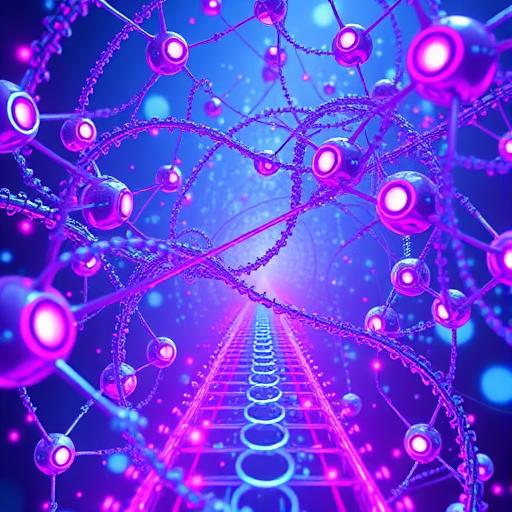Imagine a world where aging is optional, and diseases are a thing of the past. It might sound like science fiction, but leading futurists and scientists believe that by 2030, nanobots could make human immortality a reality. With the rapid advancements in nanotechnology and biomedical engineering, the possibility of becoming immune to all diseases is closer than ever. In this blog post, we’ll explore how nanobots could revolutionize human health and potentially grant us immortality.
According to former Google engineer Ray Kurzweil, humans could achieve immortality as early as 2030 through the development of nanobots—microscopic robots designed to repair damaged cells, eliminate diseases like cancer, and dramatically extend human lifespan by continuously maintaining our biological systems.
Ray Kurzweil, a renowned futurist with an impressive track record of technological predictions, believes that by 2030, humans will reach “longevity escape velocity” – where medical advancements add more than a year to our life expectancy annually, effectively creating a path to immortality.12 His vision includes nanobots flowing through our bloodstream to repair cellular damage, combat diseases, and reverse aging processes.31 Kurzweil also predicts that these technologies will enhance human capabilities by linking our brains to the cloud, allowing us to send videos directly from our minds and back up our memories.1
Kurzweil’s credibility stems from his previous accurate predictions, including the rise of portable computers, the explosion of the Internet, and an IBM computer defeating a world chess champion.14 As Google’s Chief Engineer and recipient of the National Medal of Technology, Kurzweil outlines this technological singularity in his books, where AI and human biology merge to unlock immortality through advancements in gene therapy, stem cell research, and regenerative medicine.25 While critics question the feasibility of his timeline, Kurzweil maintains that these developments will not only extend life but make humans “funnier, sexier, and better at expressing loving sentiment.”
Nanobots are microscopic robots, often smaller than a human cell, designed to perform specific tasks within the body. These tiny machines can be programmed to:
- Repair damaged cells and tissues
- Destroy harmful bacteria and viruses
- Monitor and regulate bodily functions
With their precision and versatility, nanobots are set to transform healthcare and disease prevention.

Nanobots designed for cellular repair represent a revolutionary approach to treating diseases and extending human lifespan. These microscopic machines can target damaged cells with remarkable precision, using surface receptors with specific ligands or antibodies to identify cellular damage markers1. Once attached to compromised cells, nanobots initiate sophisticated repair processes including DNA restoration, protein synthesis enhancement, and removal of toxic metabolic byproducts1.
The medical applications of these nanobots are expanding rapidly. Magnetic nanorobots can deliver nerve cells to targeted tissues for repairing damaged brain tissue2, while others can replace defective chromosomes with artificial alternatives to treat genetic diseases3. In vascular medicine, cellular repair nanobots deliver growth factors and stem cells to stimulate blood vessel regeneration1. These technologies aren’t merely theoretical—researchers are actively developing systems that mimic, reinforce, and create tissue repair strategies in living organisms4, potentially transforming our approach to healing and longevity through precise molecular interventions.
Life extension research and implementation typically follows three distinct phases: investigation, determination, and implementation1. During the investigation phase, scientists collect baseline data and conduct comprehensive surveys to understand current biological conditions. The determination phase involves assessing this collected data to evaluate integrity and capacity for extended operations under future conditions1. Finally, the implementation phase puts life extension strategies into action, which may include repairs, component replacements, additional monitoring, or combinations of these approaches.

In the context of human longevity, three key molecular pathways have been identified as critical targets: mTOR, AMPK, and sirtuins2. Compounds like pterostilbene (found primarily in blueberries) can activate these pathways to potentially extend lifespan2. Similarly, research has identified three nutrients—taurine, lithium, and spermidine—that show promise for promoting healthy aging and longevity3. In animal studies, taurine increased median lifespan in worms by 23% and in mice by up to 12%, while lithium helps maintain longer telomeres and protects against senescent cells that contribute to accelerated aging3.
Nanobots could continuously patrol our bodies, identifying and repairing damaged cells. This could halt or even reverse the aging process, making biological immortality possible.
By targeting and neutralizing pathogens instantly, nanobots could make us immune to viruses, bacteria, and even cancer. Imagine a world without pandemics or chronic illnesses!
Nanobots could provide real-time health data, alerting us to potential issues before they become serious. Early detection is key to effective treatment and long-term health.
Futurists like Ray Kurzweil predict that by 2030, nanobot technology will be advanced enough to achieve these feats. While there are still challenges to overcome—such as safety, ethical concerns, and accessibility—the pace of innovation is accelerating.
- End of Age-Related Diseases: Alzheimer’s, heart disease, and other age-related illnesses could become obsolete.
- Extended Lifespans: People could live healthy, vibrant lives for centuries.
- Revolutionized Healthcare: Medical costs could plummet as diseases are eradicated.
While the promise of immortality is exciting, it raises important questions:
- Who will have access to these technologies?
- How will society adapt to longer lifespans?
- What are the environmental impacts?
These are vital discussions as we move closer to a disease-free future.

generic vardenafil preludemd levitra atenolol levitra wirkungsdauer